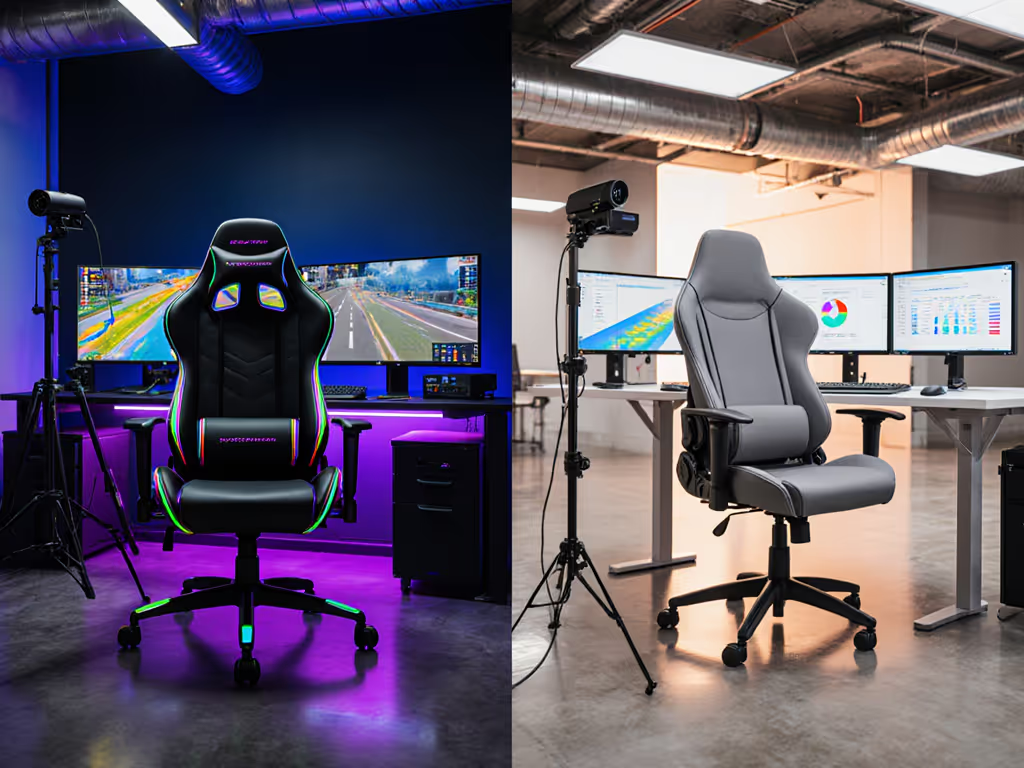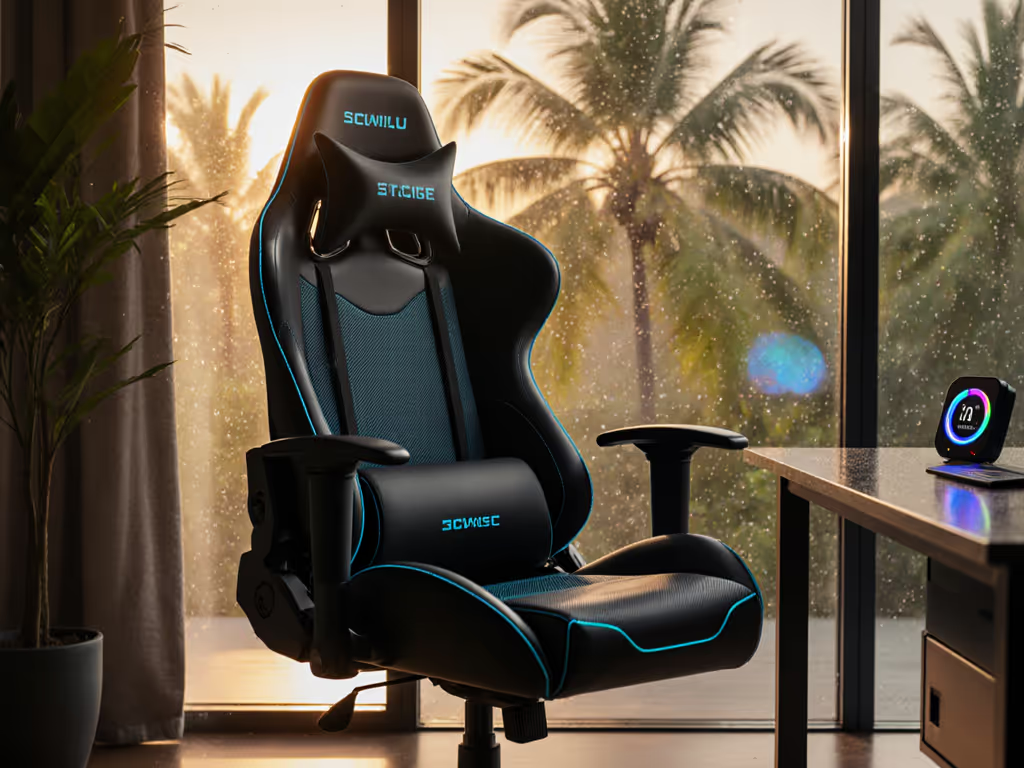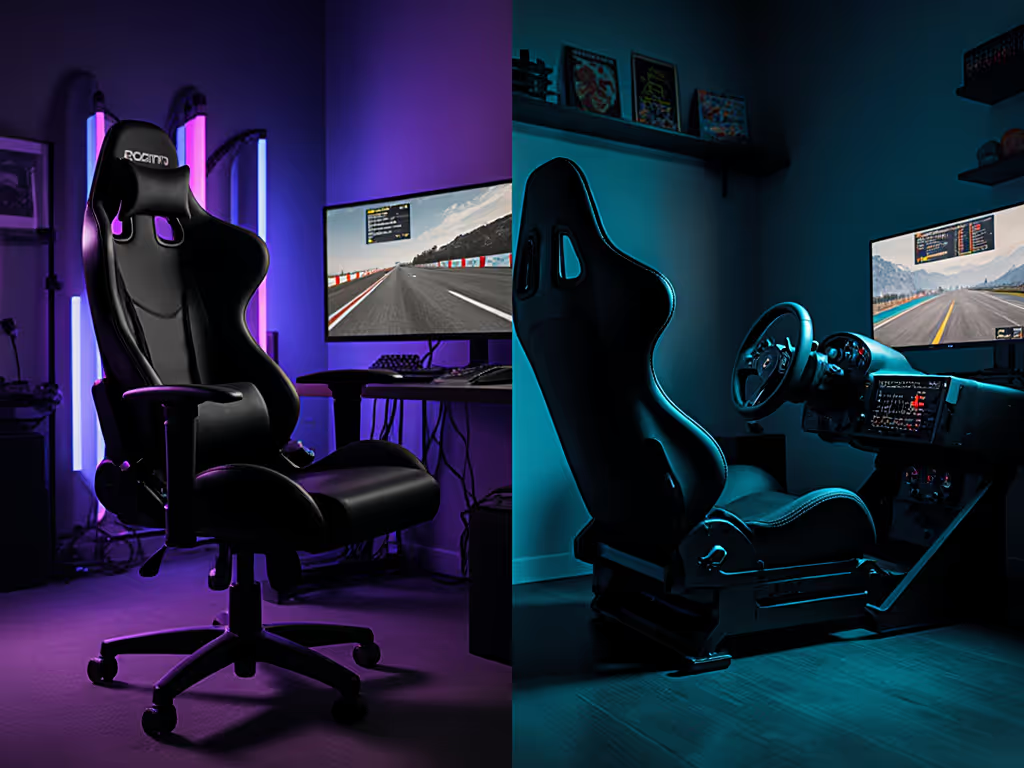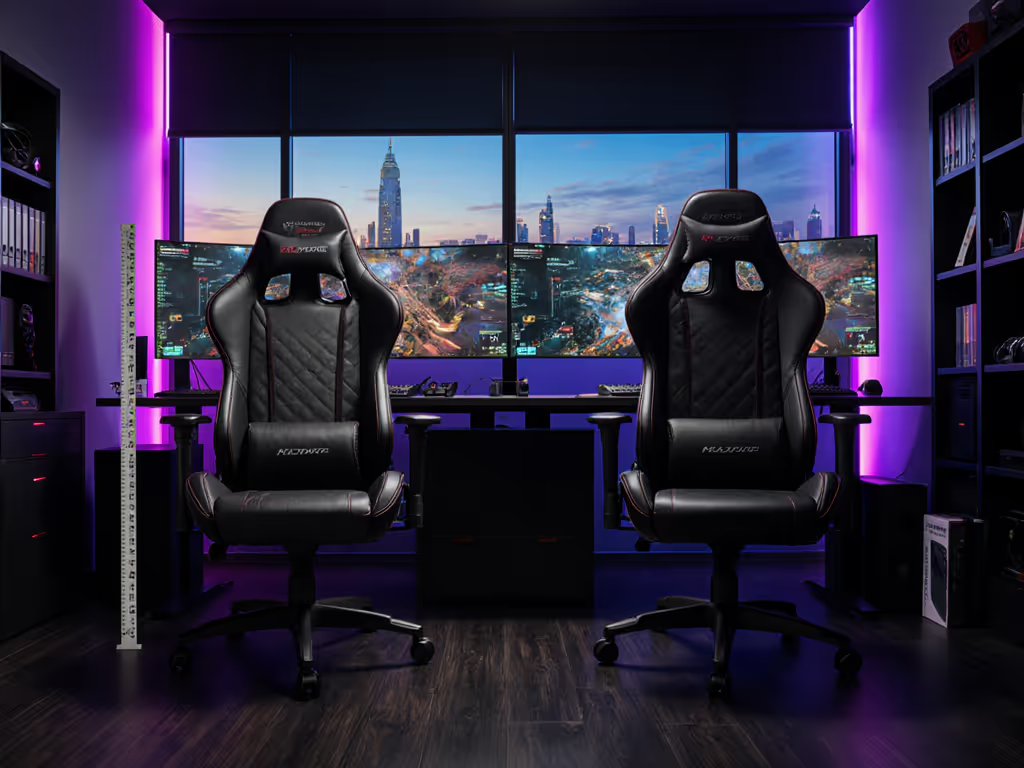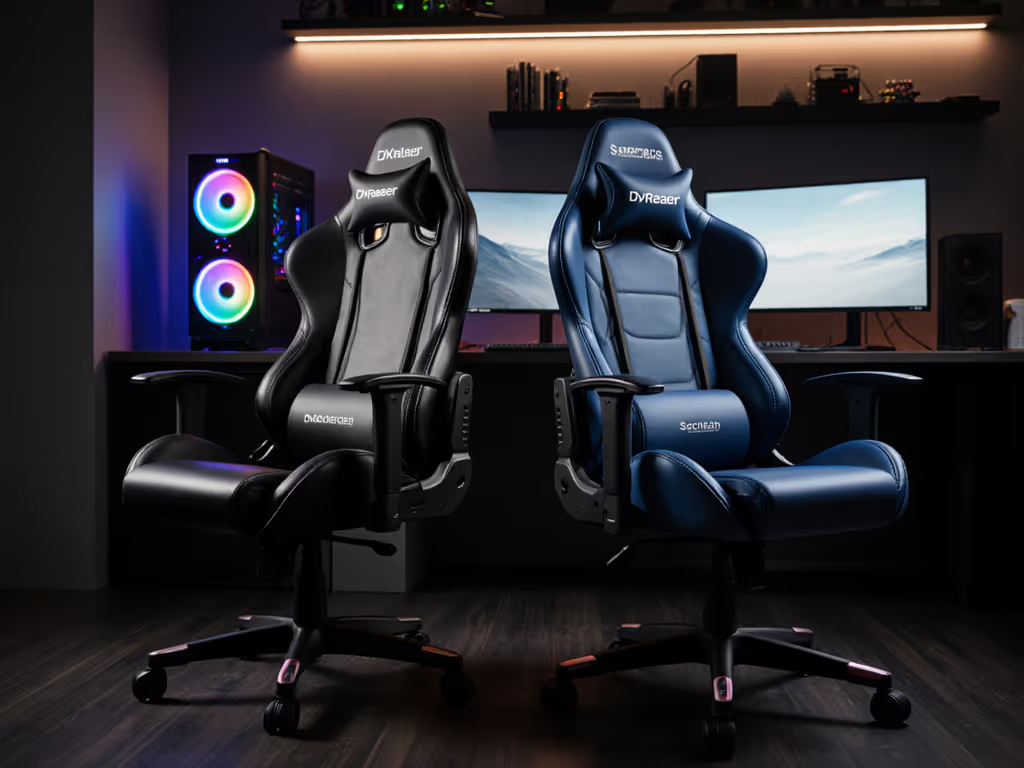
Bean Bag vs Gaming Chair: Comfort for Your Body Type
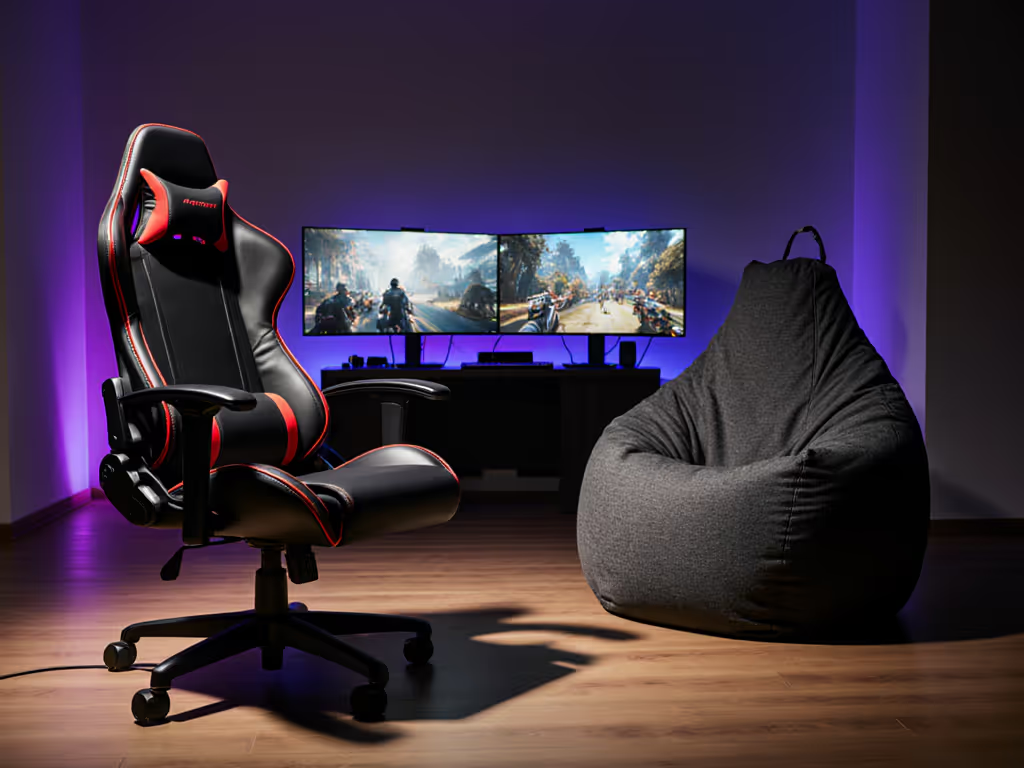
If you're wrestling with the bean bag vs gaming chair dilemma, you're not just choosing between two seating options, you're trying to solve a very personal comfort puzzle. Your shoulder breadth, thigh thickness, and spinal curvature mean your "best seat" differs from mine, which means generic reviews won't cut it. In this alternative gaming seating guide, we'll translate your measurements into actionable fit criteria, because when your legs aren't numb after hour two, you'll know you've found your match. Fit beats flair every time.
I've seen gamers swear by bean bags until they compressed their sciatic nerve during an epic raid, and others stick with gaming chairs until their tailbone ached. The truth? Neither option is universally better, your body measurements dictate which solution fits you. Let's decode your perfect match through five body-specific considerations.
1. Your Seat Depth Needs: Measuring Thighs and Hip-to-Knee Distance
When you sit, your hip-to-knee measurement determines optimal seat depth (critical for both circulation and spine alignment). Sit at the edge of a chair and measure from your hip bone to the back of your knee.
-
Under 16 inches: You're likely petite (5'5" or under). Most gaming chairs overfill this space, creating pressure behind your knees. Bean bags like the Big Joe Milano excel here because they conform to your natural posture without forcing you into a rigid seat pan. That rounded-front design prevents that "hammock sag" that flattens support for shorter frames.
-
16-19 inches: Average build (5'6"-6'0"). Gaming chairs with adjustable depth (like the GTPLAYER Gaming Chair) become competitive, they let you dial in the perfect 1-2 inch gap between seat edge and knee crease.
-
Over 19 inches: Tall or thick-thighed (6'1"+ or broad builds). Standard gaming chairs often end before your thigh does. Look for models with 20+ inch depth ratings or bean bags with structured lumbar walls that won't collapse under your weight.
Seat depth isn't just comfort, it is circulation. Pressure behind knees = numb legs during boss fights.
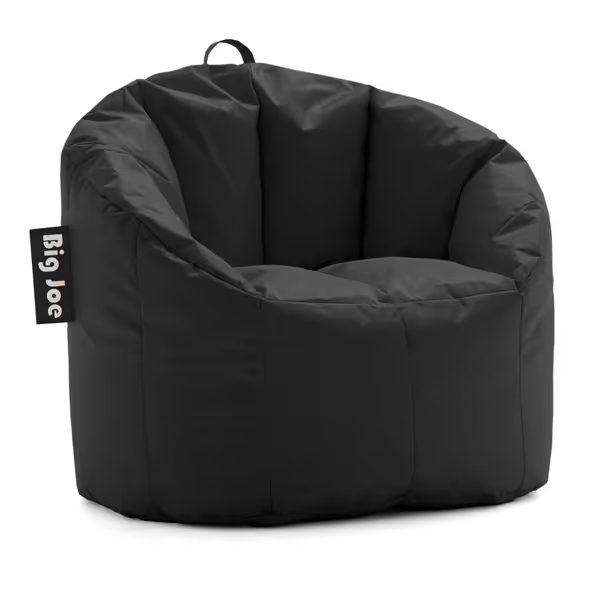
Big Joe Milano Beanbag Chair
2. Shoulder Width and Backrest Height: Measuring from C7 Vertebra to Hip
Stand against a wall and locate your C7 vertebra (the bump at your neck base). Measure down to your hip bone, this determines required backrest height.
-
Under 18 inches: Petite frames need lower backrests. Racing-style gaming chairs often tower above your headrest, forcing you to crane your neck. Bean bags with molded neck rolls (like the Milano's structured back) provide proportional support without "head floating."
-
18-20 inches: Standard builds benefit from gaming chairs with 30+ inch tall backrests and adjustable headrests. Watch for lumbar pillows that hit your natural curve, not a one-size spot that's too high for short torsos.
-
Over 20 inches: Broad-shouldered or long-torso gamers require 32+ inch backrests. Most "big and tall" gaming chairs widen the seat but neglect vertical scale. The GTPLAYER's 30.9-inch interior height accommodates many tall users, but measure your spine first.
3. Pressure Distribution: Mapping Your Body's Weight Zones
Sit on a piece of paper, trace your outline, and note where pressure concentrates. This simple test reveals your ideal seating structure:
-
Heavy hip/thigh concentration ("sitter bones" dominant): Gaming chairs with waterfall seat edges (curved downward front) prevent thigh compression. Look for seats rated for 20+ inch width if your hips span more than 14 inches.
-
Even weight distribution ("sinking" preference): You'll love bean bags' moldable support. The Milano's SmartMax fabric resists bottoming out, maintaining the rounded front that keeps pressure off knees, critical for gamers over 250 lbs.
-
Upper body dominant (broad shoulders/forward lean): Gaming chairs with adjustable 4D armrests let you position support under your elbows during intense aim sessions. Fixed-height bean bag arms force compromised posture.
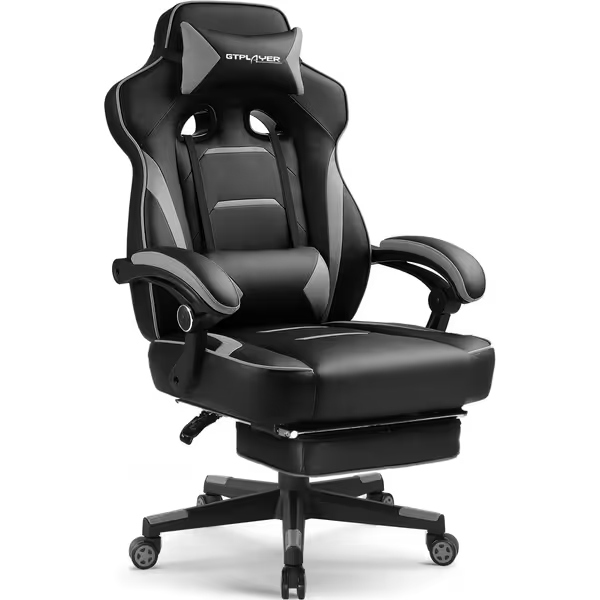
GTPLAYER Gaming Chair with Footrest
4. Heat Management: Correlating Weight and Material Breathability
Your body mass index (BMI) directly impacts thermal comfort during 4+ hour sessions. Calculate your surface-area-to-mass ratio:
-
BMI < 22 (slender builds): Sweat less but feel cold easily. PU leather gaming chairs (like the GTPLAYER's "sweat-proof" model) provide warmth retention without overheating.
-
BMI 22-28 (average to athletic): You need breathable materials. Mesh-backed gaming chairs or bean bags with cotton-polyester blends (like the Milano's SmartMax) wick moisture better than solid foam.
-
BMI > 28 (higher weight): Heat builds faster. Avoid dense foam bean bags (they compress into insulating slabs). Opt for gaming chairs with ventilated seats or bean bags with dual-zippered fill systems that allow airflow adjustment.
5. Movement Range: Measuring Your Playstyle's Dynamic Posture
Record your elbow-to-waist distance during:
- Default relaxed posture
- Intense aiming posture
- Reclined viewing posture
This reveals your needed adjustability:
-
2+ inch shift between postures: Gaming chairs win with 4D armrests and tilt tension control. The GTPLAYER's linkage arms pivot inward for controller play, then splay out during keyboard brawls.
-
Minimal shift (consistent posture): Bean bags shine, they hold your preferred position without mechanical adjustments. The Milano's double-stitched seams maintain shape even during rapid leans.
-
Extreme recline needs: Bean bags softly support horizontal positions better than gaming chairs' stiff 155° max recline. But if you need to snap back to upright instantly (for stream interruptions), gaming chairs reset faster.
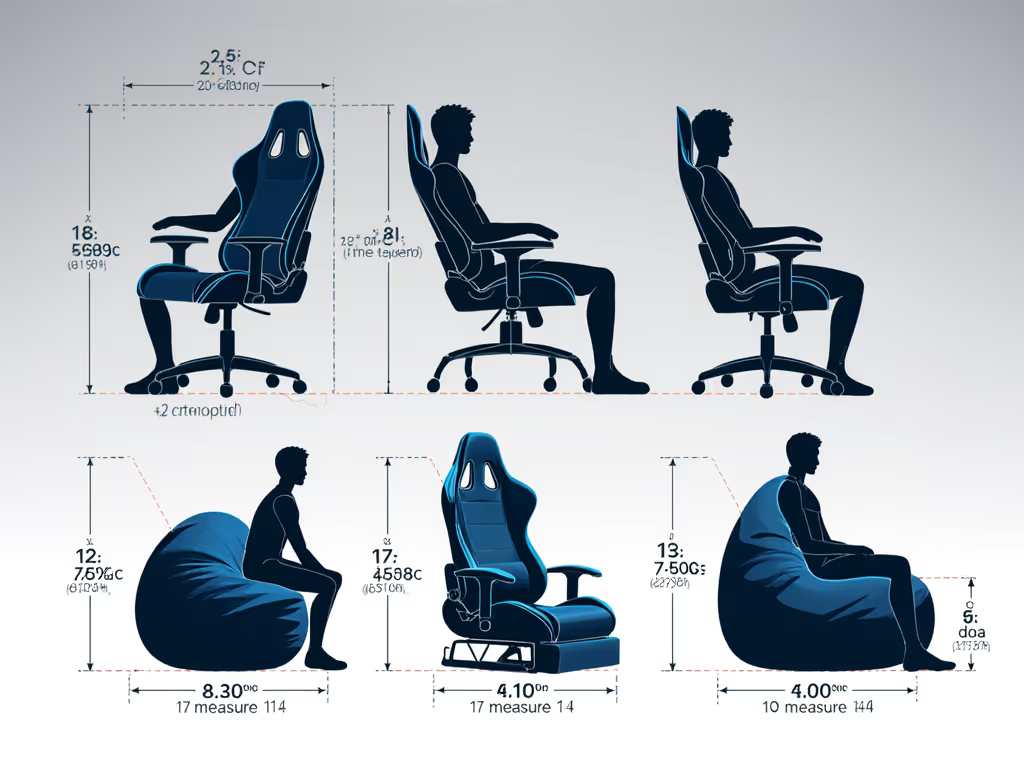
6. Durability by Body Load: Translating Weight to Longevity
Manufacturer "weight limits" lie, they test on static loads, not dynamic gaming movements. Apply your actual force:
-
Static weight ÷ 0.7 = Dynamic load (e.g., 180 lb static → 257 lb dynamic during aggressive leans)
-
Under 200 lb dynamic load: Most bean bags last 2+ years. The Milano's 250 lb rating holds up for petite to average builds.
-
200-300 lb dynamic load: Prioritize gaming chairs with BIFMA-certified bases (like the GTPLAYER's). Avoid bean bags with single-zipper closures, they rupture under repeated stress.
-
Over 300 lb dynamic load: Seek dual-cylinder gaming chairs or commercial-grade bean bags with internal baffles. Standard "350 lb" claims often fail at 270 lb during sudden movements.
7. Space Footprint: Your Room Dimensions vs. Chair Physics
Measure your "active zone," the space you occupy during:
-
Default sitting
-
Full lean (reclining)
-
Arm extensions (reaching peripherals)
-
Under 36" width: Bean bags dominate. The Milano folds compactly against walls, while gaming chairs need 24" clearance behind for recline.
-
36-48" width: Hybrid setups work. Gaming chairs tuck under desks better for keyboard play, but bean bags rotate 360° for couch-coop.
-
Over 48" width (broad builds + gear): Measure your "swing radius." Gaming chairs with 4D arms minimize lateral bulk, but bean bags require full circular clearance.
Your Measurements Hold the Answer
I used to swap cushions like band-aids between sessions until I measured my inseam, thigh length, and shoulder breadth. Those numbers, not influencer hype, led me to a seat with rounded front, 2 cm more height, and taller back that solved my numbness. For chair recommendations matched to your build, see our gaming chairs by body type guide. Start with your measurements; let specs narrow the field.
Whether you're 5'2" or 6'5", your perfect seat exists, but it won't fit everyone. A racing chair that crushes petite frames might be heaven for broad-shouldered streamers. A bean bag that flattens under heavy users could be bliss for lightweight RPG grinders.
Related Articles

